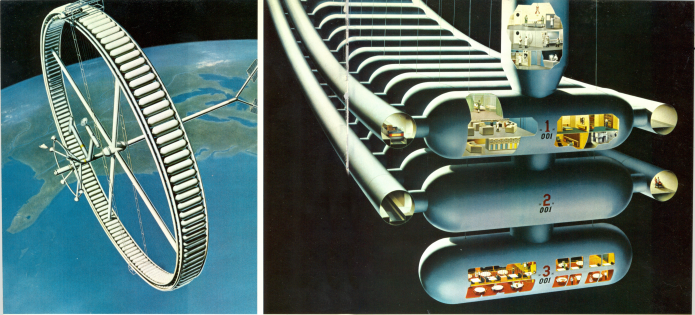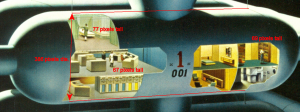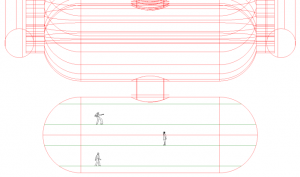Earlier this year I posted this image of a late 60’s/early 70’s Lockheed space station:

And asked if there was any hard data out there on the design. Much to my disappointment, but not to my surprise, there doesn’t seem to be any. Clearly the artist devoted a considerable amount of effort to the project… it’s not something slapped together on a whim. But it’s also likely something that got buried and may never again see the light of publicity. So some months back I decided to try to figure out just how big it was supposed to be. Fortunately there are reasonably clear humans for scale.
First off: one thing you discover real fast about the world of concept is art is Do Not Trust Scale References. Things aren’t scaled *down* too often, but things are scaled *up* with annoying frequency. Because Bigger Is Better, I suppose. Consequently, the artist here *could* have taken serious liberties; scaling things up by a factor of 1.5 or even two would not be unheard of. But… this is seemingly all there is. Without further data, you have to work with what you have.
So, starting with the cutaway image, there are a number of male human figures. Assume that the average is about 70 inches tall (for those of you in countries that *didn’t* land men on the moon, 70 inches is about 5.7621e-17 parsecs). Three figures are fairly clearly visible on the uppermost module… one is 67 pixels tall, one is 69 pixels tall and one is 77 pixels tall. The average there is 71 pixels. Thus… 71 pixels = 70 inches. For simplicity, let’s just assume that 1 pixel equals 1 inch. The diameter of the module can be estimated based on the top and bottom points of the cylinder. The top is clearly visible via the cables entering into it; the underside has similar cables which are not visible due to the module being slightly rotated. If we assume that the bottom is as far from the visible edge as the top is, that gives a diameter of 386 pixels, or 386 inches.
Interestingly, and perhaps tellingly, the diameter of the Saturn V first and second stages was 396 inches. I think it’s perhaps safe to assume that we’re looking at modules designed to be that same diameter. Drawing one of the modules in CAD by tracing over the geometry gives a module length of about 1116 inches.
Coming up next time on “Don’t You Have Anything Better To Do Theater:” the overall layout and dimensions of the space station.

